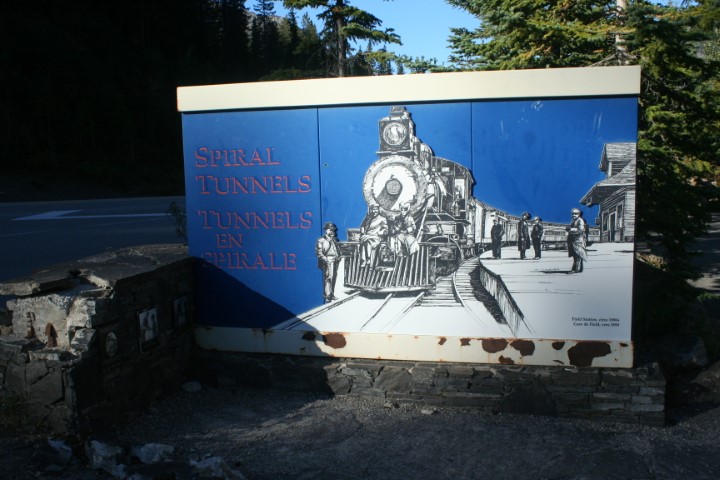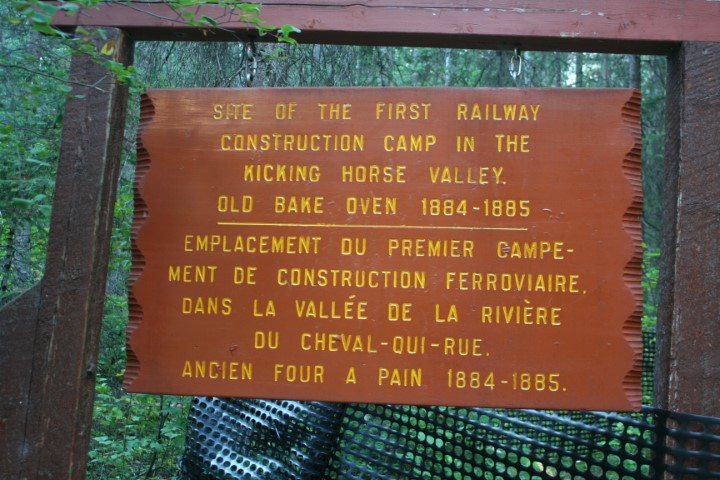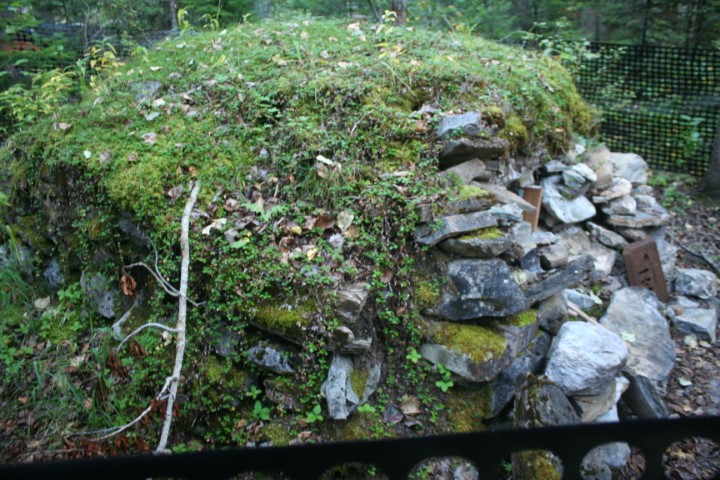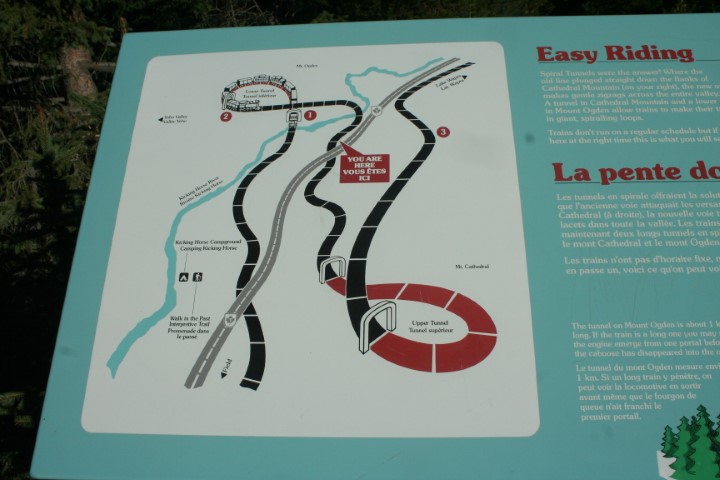Our Vimeo Channel: The Goldseekers
Our U Tube Channel: TheGoldseekers
Fisherman Creek Falls & The Tunnel
Fisherman Creek Falls and The CPR Tunnel
>>>>>>>>>>>>>>>>
The Gold Drop Claim
J. Hetu staked the Gold Drop in 1893. In 1899 The Gold Drop Mining Company was formed to develop the property. In 1900 The Gold Drop produced 13 tons of ore yielding 1 ounce of gold, 14 ounces of silver and 919 pounds of copper. In 1905 The Granby Consolidated Mining, Smelting & Power Company acquired the Gold Drop. Over 1,764,339 tones of ore was shipped from the Gold Drop up to the end of 1919 when the mine closed down. In 1930 the property was acquired by R.L. Clothier and Arthur Proctor. In 1951 Attwood Copper Mines optioned the property.
The Gold Drop property has tunnels which swing across the Rawhide and Curlew and terminate on the Snowshoe claim. In 1955 Granby repurchased part of the property.
The Gold Drop property has tunnels which swing across the Rawhide and Curlew and terminate on the Snowshoe claim. In 1955 Granby repurchased part of the property.
The Gold Drop Claim Video
Repainting our pickup
>>>>>>>>>>>>>>>>
Polishing tail light lens
>>>>>>
Orchard Torch Video
>>>>>>>>>>>
The Last Spike
During the California gold rush of the 1840's many Chinese migrants came in search of their fortune. They came to make enough money to secure a decent life for themselves and their families. They called the new land "Gold Mountain".
When construction of the CPR began in 1880, it was estimated that a labor force of several thousand men were needed. Where would all these men come from when there were only about 30,000 people in British Columbia at that time.
Andrew Onderdonk secured contracts for the CP Rail Line between Port Moody, BC and Craigellachie, BC. Prime Minister Sir John Macdonald defended the use of Chinese labor even though most politicians were opposed to immigration from China.
In 1882 over 8000 people, mostly men arrived from San Francisco and Hong Kong.
The trip from Hong Kong took 50 days and the living conditions on the ships were very poor. After 1882 the conditions were improved on the ships so that the men would arrive in good condition for the hard work ahead. There were about 15,000 Chinese workers employed between 1880 and 1885. Exact figures were impossible to find as they were hired by groups and not as individuals.
The Chinese workers lived in tents while the white workers paid $4.00 per week to stay in large houses built along the rail line. Larger camps of 2000 Chinese workers were able to break up camp, travel 20 miles or so on foot and set up a new camp in 24 hours, whereas the white workers took almost a week to do the same. Living conditions were poor, accidents were frequent. Over the 350 miles that connected British Columbia with the rest of Canada, about 700 Chinese workers died. That is for every mile of railway 2 Chinese workers died.
When the railway was completed in 1885 thousands of Chinese workers were out of work. Some headed east, some stayed in BC, and some went back to China. In 1885 the federal government passed the Chinese Immigration Act, imposing a $50.00 head tax for every person entering Canada from China. The Tax was increased to $100.00 in 1900 and later increased to $500.00. Chinese immigration was completely banned in 1923.
There are many stories of where the real last spike is. There is a ceremonial silver spike that did not arrive in time for the occasion. This spike is apparently in a Museum in Gatineau, Quebec (why in Quebec?). The simple iron spike that Donald Smith first used was made into brooches for the CPR directors. The second spike that was driven properly was removed and made into a knife and is now in private hands.
Another spike that was used is said to have had pieces removed and made into jewelry. The rest of the spike is housed in the Canada Science and Technology Museum in Ottawa, Ontario.
To learn more about the Chinese Legacies visit the Revelstoke Railway Museum and Archives.
In 2014 a formal apology was delivered on behalf of the B.C. legislative assembly to Chinese Canadians for the historical wrongs committed by the past provincial governments.
Check out the video on The Last Spike
>>>>>>>>>>>>>>>
Three Valley Gap
3 Valley Gap Heritage Ghost Town is located at the head of Three Valley Lake in the spectacular Monashee Mountains of British Columba.
The 200 room resort and ghost town attraction at 3 Valley Gap was the work of Gordon and Ethel Bell. They spent many year collecting antiques, artifacts and heritage buildings for their family business. They wanted to provide security for their family.
There are about 25 historic buildings at 3 Valley Gap which include:
an antique auto museum, Buggy & Wagon shop, Blacksmith shop, Hume General Merchant, a jail, Barbershop, Trapper Joe's Cabin, Bottle House, The Golden Wheel Saloon, St. Stephen Church (built in 1886), Watch Maker, Craigellachie School House (built in 1902), and the largest Railway Roundhouse in North America.
>>>>>>>>>>>>>
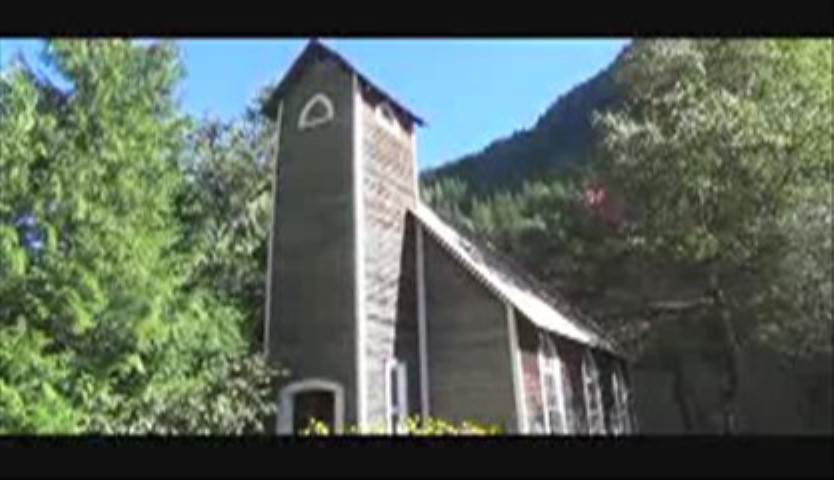
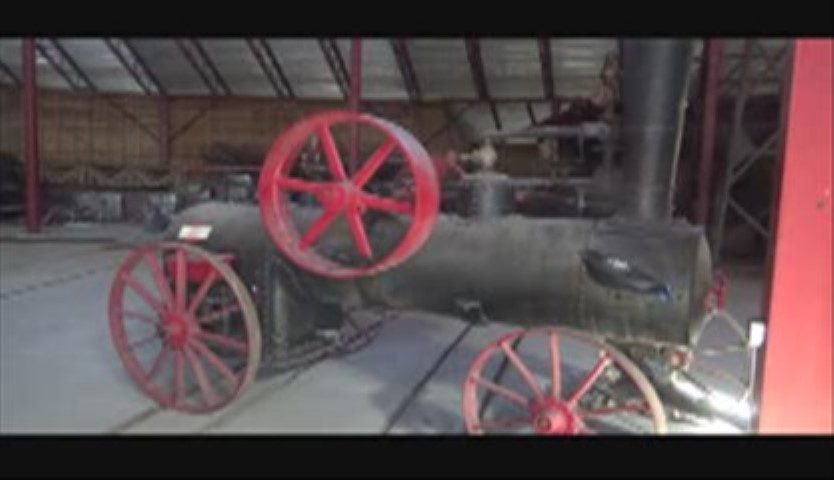
Three Valley Gap Video
>>>>>>>>>>>>
Giant Cedars
Take a walk along Giant Cedars Boardwalk Trail in Mount Revelstoke Forest about 18 miles from the town of Revelstoke. The trail itself is less that a quarter mile long but well worth the walk.
Giant Cedars Boardwalk Video
>>>>>>
Revelstoke Train Museum
The Revelstoke Museum has a good collection of artifacts and displays that tell the story of the construction and operation of the railway.
Revelstoke Train Museum Video
>>>>>>>>>>>>>
The Spiral Tunnels and Kicking Horse Pass
British Columbia would join the Confederation under the condition that a railway would be built to link the Province with the rest of Canada. It was quite a big challenge to build a rail line in such a big country especially going through the Rocky Mountains. Kicking Horse Pass was chosen because it was the shortest distance to the coast. The steep grade at Kicking Horse Pass created a serious problem and the CPR was in no position to carve a gradual grade. The government then temporarily allowed a 4.5% grade. The first train to pass down the steep grade in 1884 derailed killing the workers. To make things safer three spur lines were created to divert runaway trains on what became known as the "Big Hill". The switches were always set for the spurs. The switchmen would then reset to the main line when they knew the train was under control. Going uphill was also a problem as extra engines were needed to push the train up the hill.
People were inspired by the Rocky Mountains and more tourists then started to travel by train. The CPR prompted the creation of Mount Stephen Dominion Reserve in 1866. In 1901 the park was renamed Yoho National Park.
The path of the Spiral Tunnels
An eastbound train leaving Field climbs a small grade, goes through two straight tunnels on Mt. Stephen, then goes under the Trans-Canada Highway, across the Kicking Horse River and into the Lower Spiral Tunnel in Mt. Ogden. The tunnel turns to the left inside the mountain for about one half a mile and comes out 50 feet higher. The train then crosses back over the Kicking Horse River, under the highway again and into another one half mile tunnel in Cathedral Mountain, then spirals to the right, coming out 56 feet higher.
The Spiral Tunnels were completed in 1909. After 25 years of use the Big Hill was abandoned. This new grade was safer and reduced costs.
There are two viewpoints where you can watch trains and learn more about the Spiral Tunnels and Kicking Horse Pass National Historic Site of Canada. About 25 to 30 trains pass through the Spiral Tunnels daily.
From the viewpoint 4 1/2 miles east of Field on the Trans-Canada Highway, you can see the Lower Spiral Tunnel.
The Upper Spiral Tunnel can be seen from the pull-off one and a half miles up the Yoho Valley Road.
Saskatchewan River Crossing
Saskatchewan River Crossing is located within Banff National Park at the junction of the Ice Fields Parkway 93 and the David Thompson Highway 11.
It was named "The Crossing", when travelers and fur traders used this spot to cross the North Saskatchewan River on their way to British Columbia in the 19th century
It was named "The Crossing", when travelers and fur traders used this spot to cross the North Saskatchewan River on their way to British Columbia in the 19th century
Columbia Icefield
The Columbia Ice field is the largest ice field in North America and located in the Canadian Rockies along the border of Alberta and British Columbia, The ice field lies partly in Jasper National Park and partly in Banff National Park. It covers an area of 125 sq miles, 1200 ft deep and receives about 300 inches of snow per year.
Columbia Icefield video
>>>>>>>>>>>>>>>>
Sunwapta Falls
The Sunwapta River originates from the Athabasca Glacier and is a Class 6 waterfall. There are two falls, an upper and a lower one. Most people see the upper falls, but the lower falls is just a short distance away.
Sunwapta Falls Video
>>>>>>>>>>>>>
Athabasca Falls
Athabasca River comes from the Columbia Icefield and is the largest river system in Jasper National Park. The Overlanders traveled along the Athabasca River to get to the Caribou Gold Rush in the early 1860's.
Athabasca Falls Video
>>>>>>>>>>>>
Bridal Veil Falls & Panther Falls
Bridal Veil Falls is a waterfall on the Ice fields Parkway in Banff National Park, Alberta, Canada. It originates in the Huntington Glacier on the slopes of Cirrus Mountain. Its waters drain into Nigel Creek, then into the North Saskatchewan River. It is a class 4 waterfall, with a drop of 1,200 ft and a width of 20 ft. The tallest single drop is 400 ft. (Some info from Wikipedia)
Panther Falls is in Banff National Park. It is a Class 3 waterfall, with a drop of 217 ft and a with of 66 ft.
Panther Falls is in Banff National Park. It is a Class 3 waterfall, with a drop of 217 ft and a with of 66 ft.
Bridal Veil Falls & Panther Falls Video
